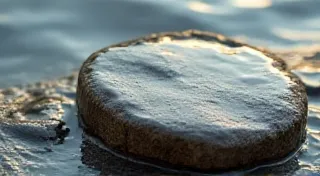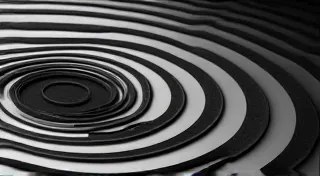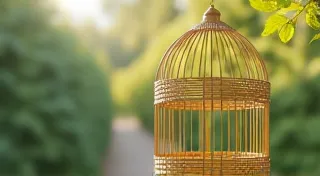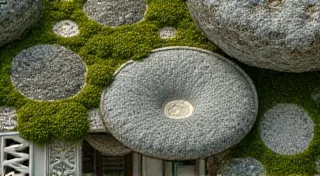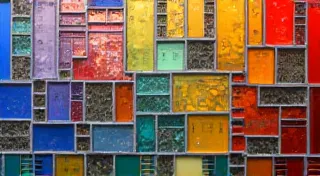Golden Threads of Memory: Weaving Detail into Sensory Prose
There’s a quiet dignity to things that have lived. A worn leather armchair, a chipped teacup, a well-loved book – each holds a silent narrative etched into its surface. But there's a particular resonance to objects marked by breakage, objects that have endured a fracture and emerged, somehow, even more beautiful. This is the heart of Kintsugi, the Japanese art of repairing broken pottery with gold, and it’s an art that speaks volumes about resilience, acceptance, and the exquisite beauty of imperfection.
My own fascination with objects bearing the weight of time began, unexpectedly, with an antique accordion. Not just any accordion, but a Hohner Marine Band, its bellows cracked and faded, a constellation of scratches marring its polished surface. My grandfather, a man of few words but immense sentiment, played it during family gatherings. The music, often hesitant and punctuated by the sound of struggling valves, was a soundtrack to my childhood. After he passed, the accordion sat silent, a tangible reminder of loss and a testament to a fading legacy. It wasn’t something I wanted to discard, but what could I do with a broken accordion? The thought of repair seemed daunting, almost irreverent.
This feeling—the reverence for an object's history—is precisely what Kintsugi embodies. It's a philosophy as much as it is a craft. Derived from kin (gold) and tsugi (to mend), Kintsugi isn't about hiding the damage. Instead, it celebrates it. The cracks aren’t flaws to be concealed; they are lines of distinction, highlighting the object’s journey. The golden seams become visual metaphors for healing and strength, transforming a moment of breakage into a powerful statement of enduring beauty.

Historically, Kintsugi's origins are often traced back to 15th-century Japan, though some argue for even earlier roots. Legend attributes the technique to the shogun Ashikaga Yoshimasa, who, upon breaking his favorite tea bowl, sent it to China for repair. Dissatisfied with the unsightly metal staples used in Chinese repair methods, he requested a more aesthetically pleasing solution upon its return to Japan. It was then that Japanese artisans began experimenting with lacquer mixed with powdered gold, silver, and platinum. The result was a revolutionary approach to repair, transforming damage from a mark of imperfection to a feature of unique beauty.
The process itself is meticulous and demands a deep respect for the materials. The broken pieces are carefully cleaned and reassembled using traditional lacquer, often incorporating natural ingredients like urushi (Japanese lacquer) that require extended curing times – sometimes months or even years. The application of gold isn’t simply a superficial coating; it’s an integral part of the mend, bonding the fragments together and creating a permanent, glittering seam. The process requires not only technical skill but also patience, a steady hand, and an almost meditative focus.
The philosophy underpinning Kintsugi extends far beyond the realm of pottery repair. It’s a profound lesson in embracing vulnerability. Just as the accordion’s cracked bellows and worn keys told a story of countless melodies and shared moments, so too do the cracks in a repaired bowl whisper of a past life, a fall from grace, and a subsequent rebirth. It's a powerful reminder that our own imperfections, our scars, don't diminish us; they define us, make us who we are. They are the golden threads woven into the tapestry of our lives.
Consider antique musical instruments, for example. A violin with a repaired crack, a trumpet with a dent, a piano with faded ivory keys – each carries an inherent beauty that transcends its physical condition. The repairs are not blemishes; they are badges of honor, evidence of a life well-lived, a journey undertaken. These objects, like the vessels mended with gold, possess a patina of authenticity that cannot be replicated.

In a world obsessed with perfection and disposable goods, Kintsugi offers a compelling alternative. It champions the value of repair, the beauty of imperfection, and the enduring power of resilience. It’s a quiet rebellion against the culture of planned obsolescence, a declaration that things don’t have to be new to be valuable.
Interestingly, the principles of Kintsugi can be applied to more than just physical objects. They can offer a framework for understanding our own lives, our relationships, and our experiences. Just as a broken bowl is made more beautiful through repair, so too can we emerge stronger and more compassionate after facing adversity. The scars we carry are not signs of weakness; they are evidence of our ability to heal and to grow.
My grandfather’s accordion, after years of silence, eventually found its way into the hands of a skilled restorer. He didn't try to erase the cracks or hide the wear. Instead, he meticulously repaired the bellows, replaced the worn reeds, and polished the casing, revealing the beauty that lay beneath the surface. The restored accordion is now a testament to the enduring power of music and the importance of honoring the past. The golden threads of memory, like the golden seams of Kintsugi, remain, shimmering with the light of a life well-lived.
The allure of collecting antique objects, particularly those bearing the marks of time, lies in this very appreciation for history and authenticity. It's a connection to the past, a tangible link to generations gone by. A repaired antique—a piece of Kintsugi pottery, a meticulously restored violin, a lovingly maintained accordion—is more than just an object; it’s a story waiting to be told. And in that story, we find a profound and enduring beauty.

Kintsugi, ultimately, is a profound meditation on the nature of beauty, resilience, and the enduring power of the human spirit. It reminds us that imperfections are not flaws to be hidden, but rather opportunities to celebrate the richness and complexity of our lives.
